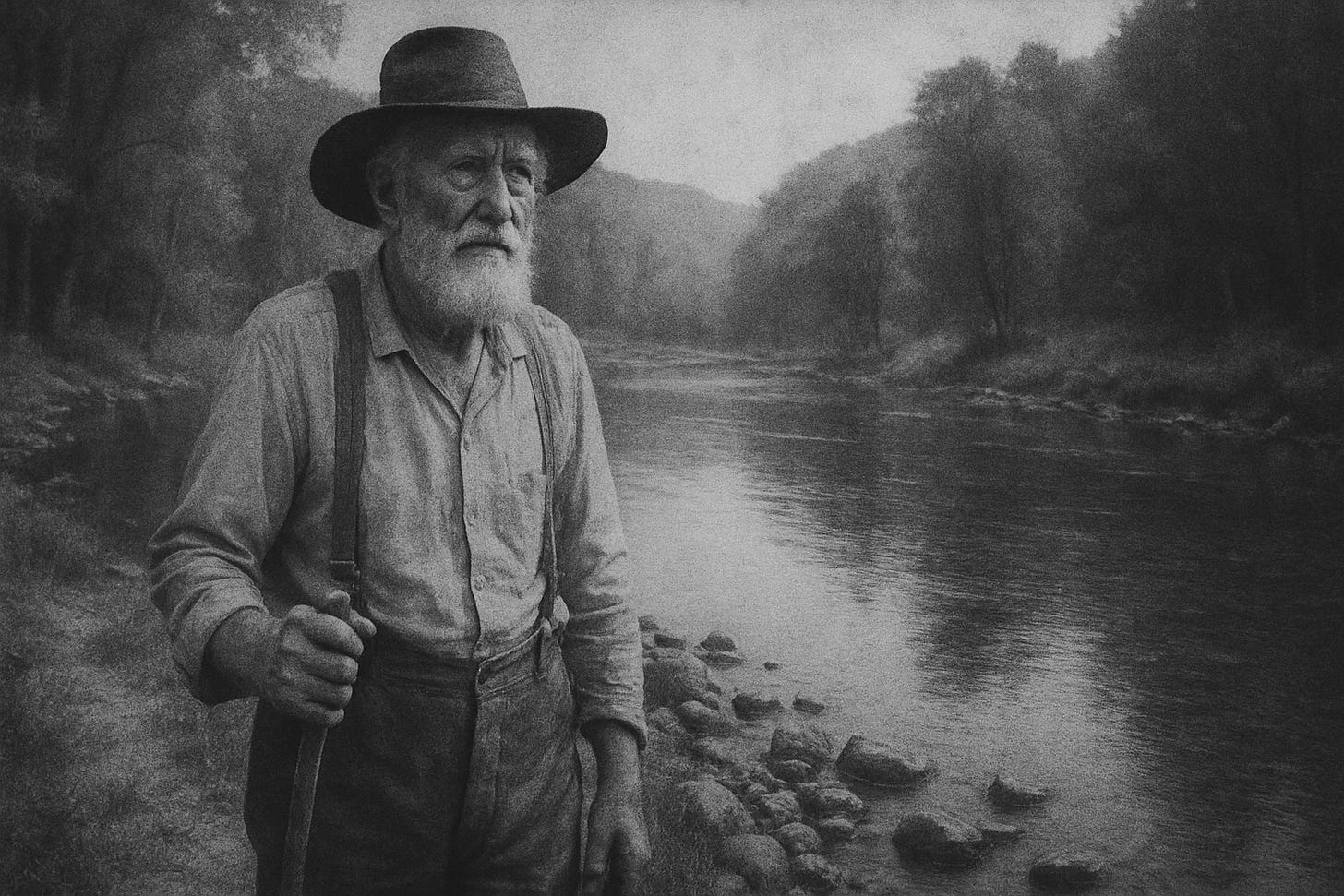Today’s newsletter is sponsored by the Scott County Chamber of Commerce. Since 1954, the Scott County Chamber of Commerce has advocated for a strong community by supporting stronger infrastructure and leadership.
Randolph Lawson: Another forgotten Revolutionary War veteran

Last week’s Echoes in Time feature highlighted Abraham Goad, a Revolutionary War veteran who moved to Scott County and settled on New River around the year 1800. He was one of three Revolutionary War veterans accidentally omitted from a plaque placed outside the Scott County Courthouse in Huntsville in 1976.
This week we focus on another of those “forgotten” Revolutionary War veterans: Randolph Lawson.
Like Abraham Goad, Lawson moved to present-day Scott County in the years after the war ended and the United States gained its independence from Great Britain. Lawson is unique in that two of his brothers who also moved to what is now Scott County — David Lawson and John Lawson — were included on the courthouse plaque. But Randolph, for reasons unknown, was not.
The story of Randolph Lawson
Born in 1752, Randolph Lawson was the oldest of the three Lawson brothers who would make the move to Scott County. They were the sons of Bartholomew Lawson and Susannah Simpkins and were born in Bedford County, Va.
Bartholomew and Susannah had about 15 children, and at least five of them served in the Revolutionary War. In addition to Randolph, David and John, Morman Lawson and William Lawson fought in the war and did not join the others in the move to present-day Scott County.
There is some question about when and where Randolph Lawson was born. He told a court late in life that he was born in Cumberland County, N.C. The Lawson family did not move from Virginia to North Carolina until sometime between 1755 and 1758. Obviously, if he was born in 1752, his birth had to have been in Virginia. Of course, he would have been a small child in 1755 and may have just assumed he was born in North Carolina. And, for the record, he testified in the same court appearance that he was born in 1752.
However, there are sources that state that Lawson was not directly involved in battle when he served in the North Carolina militia during the Revolutionary War, but that he instead guarded the militia’s luggage because of his young age. If that is true, he was certainly not born in 1752. There are some sources that place his birth closer to 1765.
The war and the move
Lawson and his four brothers joined the North Carolina militia. He was present at the Battle of Camden with at least some of his brothers, and later re-entered the war for a second six-month tour.
Fought on Aug. 16, 1780, the Battle of Camden (South Carolina) was a significant defeat for the Americans, with 1,900 men killed, wounded or captured.
Following the war, Randolph Lawson and his family moved to present-day Scott County, settling on Paint Rock Creek near where it empties into New River south of Huntsville.
It’s not clear why Lawson wasn’t listed on the Scott County Revolutionary War plaque with his two brothers and the 11 other men who moved to present-day Scott County after the war. However, an 1826 court document shows that he purchased five acres of land on Paint Rock Creek. He was listed on the 1830 census as living in Campbell County. Paint Rock Creek was a part of Campbell County prior to the establishment of Scott County in 1849.
Lawson married Susannah Cross on June 13, 1791. She was born in Patrick County, Va. in 1765. She may have been the daughter of William Cross Jr. and Sarah Cocke, but that isn’t certain.
Randolph and Susannah had at least seven children, and perhaps as many as 12. Among their children were Elizabeth (born about 1786), Catherine Lakey (about 1792), Lucretia (about 1792), Elisha (1793), John Maxwell (1802), Thomas (1803) and Clarissa (1812). Others may have included Mary Louise, Randolph Jr., Samuel, Nancy and Suzanna.
The move to present-day Scott County came after Randolph and Susannah were married in 1791 but likely well before the property deed was recorded in 1826. Randolph was listed as a surveyor when Abraham Goad purchased property on New River in 1808. Randolph and Abraham were neighbors; their property basically adjoined one another along New River.
One of Randolph’s daughters, Catherine Lakey, married Thomas Chambers. He was the son of Revolutionary War veteran William Chambers, who settled on Buffalo Creek after the war. One of Catherine and Thomas’s children was Riley Chambers, who was elected Scott County’s first Registrar in 1850 and served on the committee responsible for choosing Huntsville as the county seat.
Another of Randolph’s daughters, Elizabeth (known as “Millie”) married Joseph Phillips, who had made the move to Scott County with Abraham Goad at the age of 15. Phillips’ brother, Thomas, who also made the move, was married to one of Goad’s daughters. Joseph and Millie settled on Little Bull Creek south of Huntsville. They had at least six children. One of them, Jehu Phillips, served as Scott County Trustee for six years. Late in his life, Jehu wrote a series of articles for the Cumberland Chronicle, later reprinted by the FNB Chronicle, that provide valuable insight into early Scott County. Joseph and Millie are buried in the Phillips Cemetery on Little Bull Creek. Millie was the first person buried there in 1838. Their descendants in Scott County include the prominent Phillips family of Oneida, among which are retired federal judge Tom Phillips, former district attorney general William Paul Phillips, retired businessman Steve Phillips, and current Oneida mayor Lori Phillips-Jones.
Randolph’s son, Elias, married Rachel Phillips, who was Joseph Phillips’ sister. They were married in 1816, which would indicate that Rachel Phillips also made the move to present-day Scott County with her siblings. Their parents, Tobias Phillips and Margaret Peggy Jennings, did not make the move.
Late life
Randolph Lawson eventually left Scott County and headed for Illinois, and that’s where his story gets particularly confusing.
Lawson left Paint Rock Creek sometime prior to 1840. In court testimony, he stated that he left this area in 1832. He was on his way to Illinois, but fell ill along the way, prompting the family to stop in Clinton County, Ky., just north of the TN-KY border near Byrdstown, Tenn.
It is generally thought that Lawson lived out the rest of his life in Clinton County, dying in Albany, Ky. in 1848. That’s where he lived when the 1840 census was taken, and where his wife, Susannah, died in 1844, though her burial location is unknown.
However, there are records stating that Randolph completed the move to Illinois before his death and is buried there, at an unknown location. A book published by Harriet J. Walker in 1917, “Revolutionary Soldiers Buried in Illinois,” lists Randolph Lawson’s burial in Johnson County, Ill., a rural community in the southern part of the state.
So where did Randolph Lawson die?
This we know: There were six people living in Lawson’s Albany, Ky. household when the 1840 census was taken: Randolph and Susannah, one person in their 30s, one person in their 20s, and two children younger than age 10. We don’t know the names of these people, though the ages would suggest one of the Lawson children, their spouse, and their two children. When the 1850 census was taken 10 years later, there were no Lawsons living in Clinton County, Ky. However, there were also no Lawsons living in Johnson County, Ill.
That doesn’t preclude the possibility that the Lawson child living in the household when the 1840 census was taken was one of his daughters who would’ve been listed under a married name when the 1850 census was taken. Two daughters, Millie and Catherine, lived out their lives in Scott County. However, two others, Lucretia Lawson Thompson and Clarissa Lawson Jeffries, left Scott County and died in Arkansas and Missouri, respectively. Another likely daughter, Mary Lawson Prewitt, also moved to Missouri.
It is with Clarissa — known as “Clary” — that we might find the answer. When the 1850 census was taken, Clary and her husband, William Jeffries, still lived in Clinton County, Ky. (They moved to Arkansas between 1850 and 1860.) William Jeffries was listed as a head of household in Clinton County when the 1840 census was taken, meaning Clary was not the child that lived with Randolph and Susannah in 1840.
Another of the Lawson children, Elisha, also still lived in the Clinton County area in 1850, although he was listed in Cumberland County when the 1850 census was taken. Cumberland County borders Clinton County to the west. He was also listed in Cumberland County in 1860 and 1870. Some records indicate that his wife, Rachel, died in 1870 and was buried in Lawson Cemetery near Albany, and that Elisha was buried there in 1873. However, it appears they moved to Missouri before their death.
Like William Jeffries, Elisha Lawson was listed as a head of household in Clinton County when the 1840 census was taken, meaning he did not live with his parents. We still don’t know who lived with Randolph and Susanna when the 1840 census was taken. However, if both of their children who made the move to Kentucky with them — Elisha and Clary — were still living in the Albany area in 1850, and none of their children had moved to Illinois, it seems very unlikely that Randolph and Susannah would’ve made that move alone — both of them at advanced ages and Randolph apparently ailing.
(One of Elisha’s children, Aaron Lawson, did move to Illinois, but he settled in Randolph County, on the Mississippi River, a short distance from Johnson County.)
It’s inconclusive, but highly suggestive that Randolph and Susannah Lawson died in Albany, Ky., without finishing their journey to Illinois.
Thank you for reading. Our next newsletters will be Threads of Life on Wednesday and The Weekender Thursday evening. Want to update your subscription to add or subtract these newsletters? Do so here. Need to subscribe? Enter your email address below!
◼️ Monday morning: The Daybreaker (news & the week ahead)
◼️ Tuesday: Echoes in Time (stories of our history)
◼️ Wednesday: Threads of Life (obituaries)
◼️ Thursday evening: The Weekender (news & the weekend)
◼️ Friday: Friday Features (beyond the news)
◼️ Sunday: Varsity (a weekly sports recap)



